
emerald tree boa teeth length Crowned Teeth
Reptiles are ectotherms, or cold blooded so proper temperatures are vital. An emerald tree boa likes temperatures between 74-82F a week after feeding until the next feeding. The day of feeding and the next week, the temperature should be kept at 82-84 to aid in digestion. Temperatures can drop 10F at night.
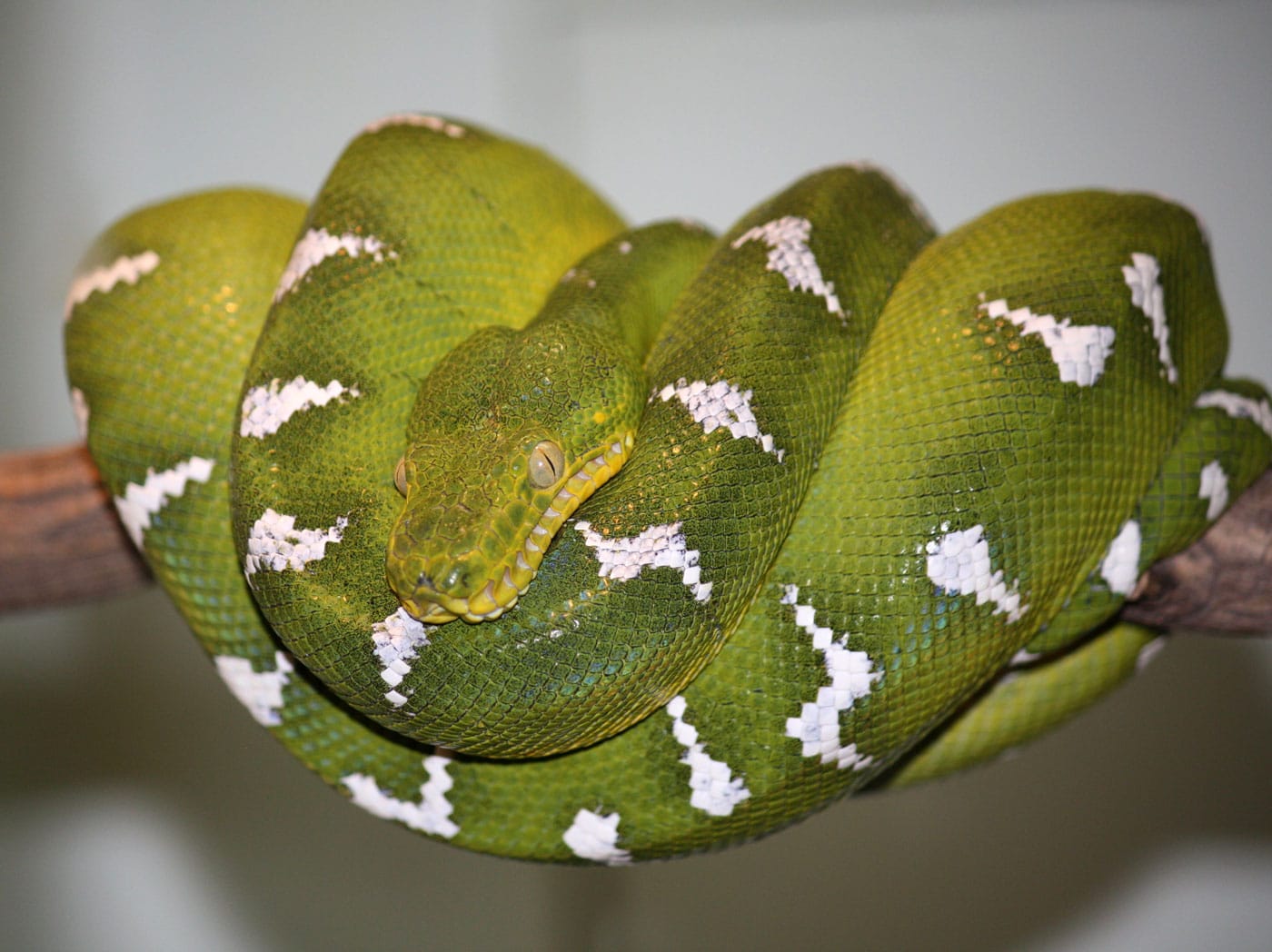
Learn about Nature Emerald Tree Boa Learn about Nature
The emerald tree boa is a non-venomous snake known for its bright yellow-green color and ability to climb. Size 4-6 feet (1.2-1.8 m) in length Diet Arboreal rodents, squirrels, monkeys, lizards and bats Range Northern South America Habitat Occurs in wet lowland rain forests Physical Characteristics

Pin on Things To Get
Adult Emerald Tree Boas typically reach a length of 5 to 6 feet (1.5 to 1.8 meters), with their slender, muscular bodies adapted for an arboreal lifestyle. They have distinctively large front teeth, longer than any other non-venomous snake, which are effective for hunting and capturing prey.

Emerald Tree Boa Facts, Habitat, Diet, Life Cycle, Baby, Pictures
Size: 4 - 6 feet Diet: Rodents, lizards, frogs, monkeys, bats What's unique about the Corallus caninus emerald tree boa? Also known as the "Guiana Shield emerald tree boa," Corallus caninus sticks to the regions of northern South America.

45 Emerald Tree Boa Facts (Guide to Both Species) Diet, Habitat, Babies
20 years Weight 400-600 g oz Length 2 m ft The Emerald tree boa (Corallus caninus) is a boa species found in the rainforests of South America. Like all other boas, it is nonvenomous and kill their prey by constriction. No Nocturnal
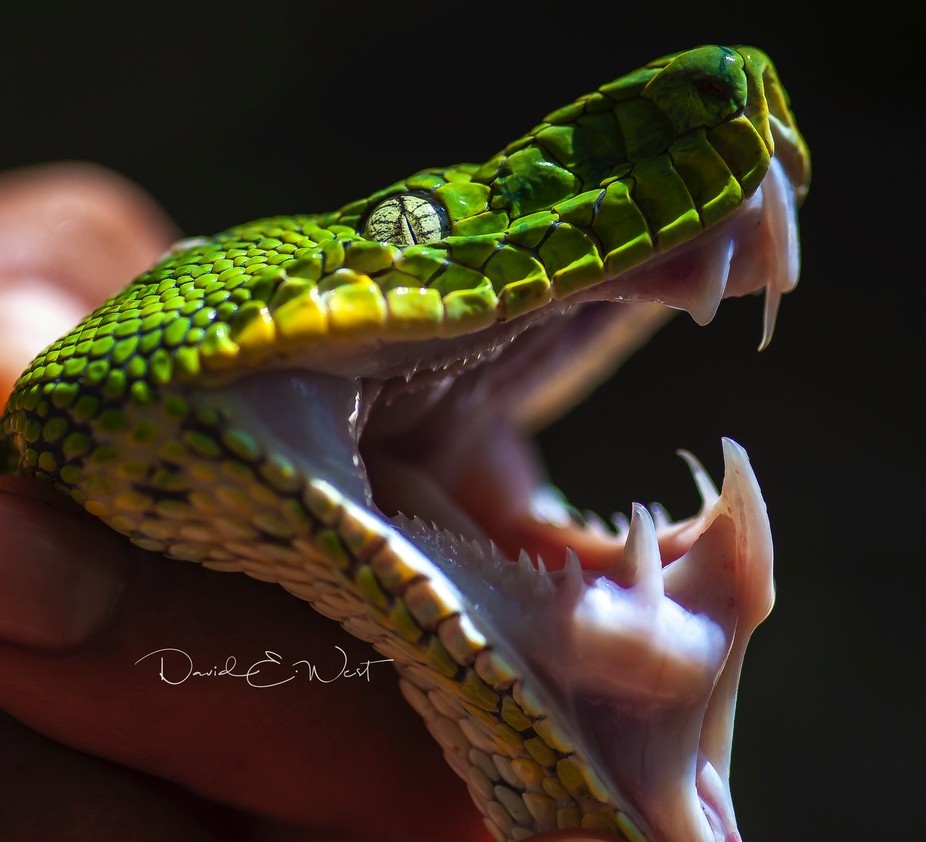
Emerald Boa teeth by wildwest
Emerald Tree Boa, scientifically known as Corallus Caninus, is a beautiful and fascinating snake in South America's rainforests. This arboreal species is known for its bright green color and distinctive pattern. One of the most striking features of emerald tree boas is their teeth.

Tree Boa teeth (With images) Emerald tree boa, Snake, Beautiful snakes
The Emerald Tree Boa is a fascinating and stunning snake species that captivates reptile enthusiasts around the world. With its vibrant green scales and striking yellow-orange eyes, this arboreal boa constrictor stands out among its counterparts.

46 Emerald Tree Boa Facts Both Species Guide (Jewel of the Amazon
A full-grown emerald tree boa gets as big as 6 ft (1.8 m) in length. It weighs around 3.3 lbs. Color and Appearance Emerald Green Tree Boa The base color of this boa is emerald green with white irregular broken zig-zag stripes like lightning bolts running down its back. Their teeth are highly developed and larger than any other non-venomous snake.

Emerald Tree Boa is NatureIsFuckingLit Nature animals, Beautiful
Diet: The Emerald Tree Boa is a carnivore. They eat small mammals, some smaller bird species, lizards and frogs. The Emerald Tree Boa has a slow metabolism and may sometimes go months without eating. Lifespan: They can live up to 25 years in human care. Social Structure: Emerald Tree Boas are solitary outside the breeding season.

Emerald Tree Boa (Corallus caninus) WILDTROPIX ANDRE BAERTSCHI
The emerald tree boa, as its name suggests, is a tree dweller. The snake spends most of its time high up in the foliage. It is a solitary snake found in the lowland tropical rainforests of the Amazonian and Guianan regions of South America. Adult emerald tree boas can grow to over 2m in length.
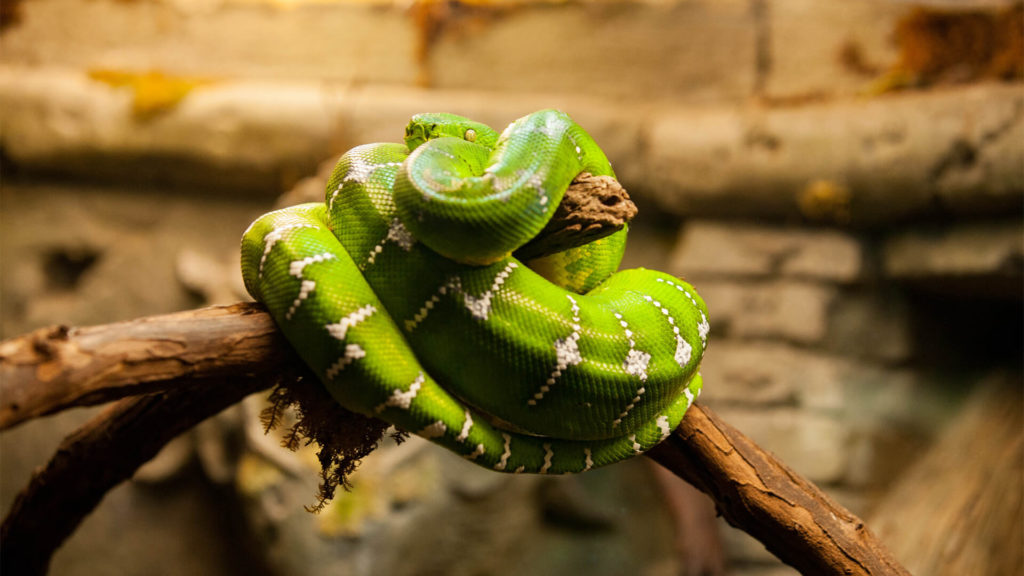
Purple Emerald Tree Boa Teeth Degraff Family
The emerald tree boa ( Corallus caninus) [3] is a boa species found in the rainforests of South America. Since 2009 the species Corallus batesii has been distinguished from the emerald tree boa. [4] Like all other boas, it is nonvenomous. Description At the Philadelphia Zoo in Philadelphia, Pennsylvania
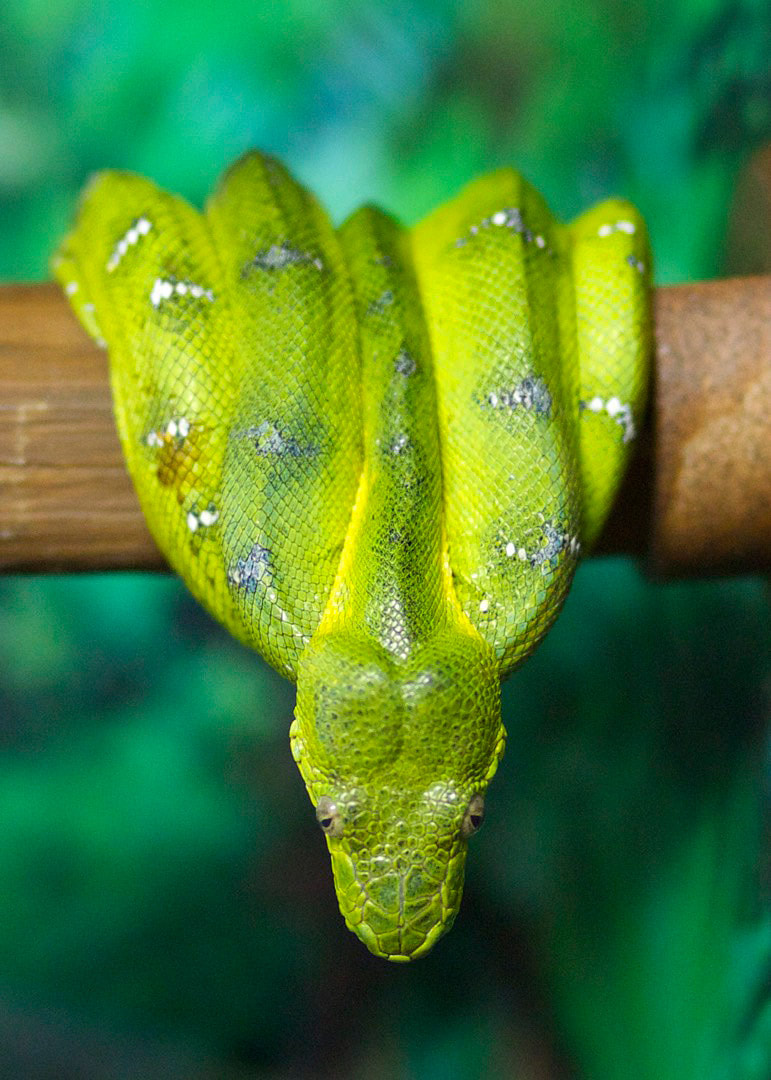
Emerald Tree Boa Connecticut's Beardsley Zoo
The Emerald Tree Boa ( Corallus caninus) is a mesmerizing snake species known for its striking appearance and arboreal lifestyle. Found predominantly in the rain forests of South America, including regions of Brazil, Colombia, and Venezuela, these snakes are easily identifiable by their vibrant green coloration and distinct white markings.

Emerald Tree Boa Connecticut's Beardsley Zoo
Emerald tree boas have large heat sensors with which they can sense infrared radiation and detect prey. They have a prehensile tail, which they use to secure themselves in a tree, in their distinctive coiled pose. They have sharp teeth, which pierce prey and they will then coil around prey to constrict and kill it. Physical Characteristics
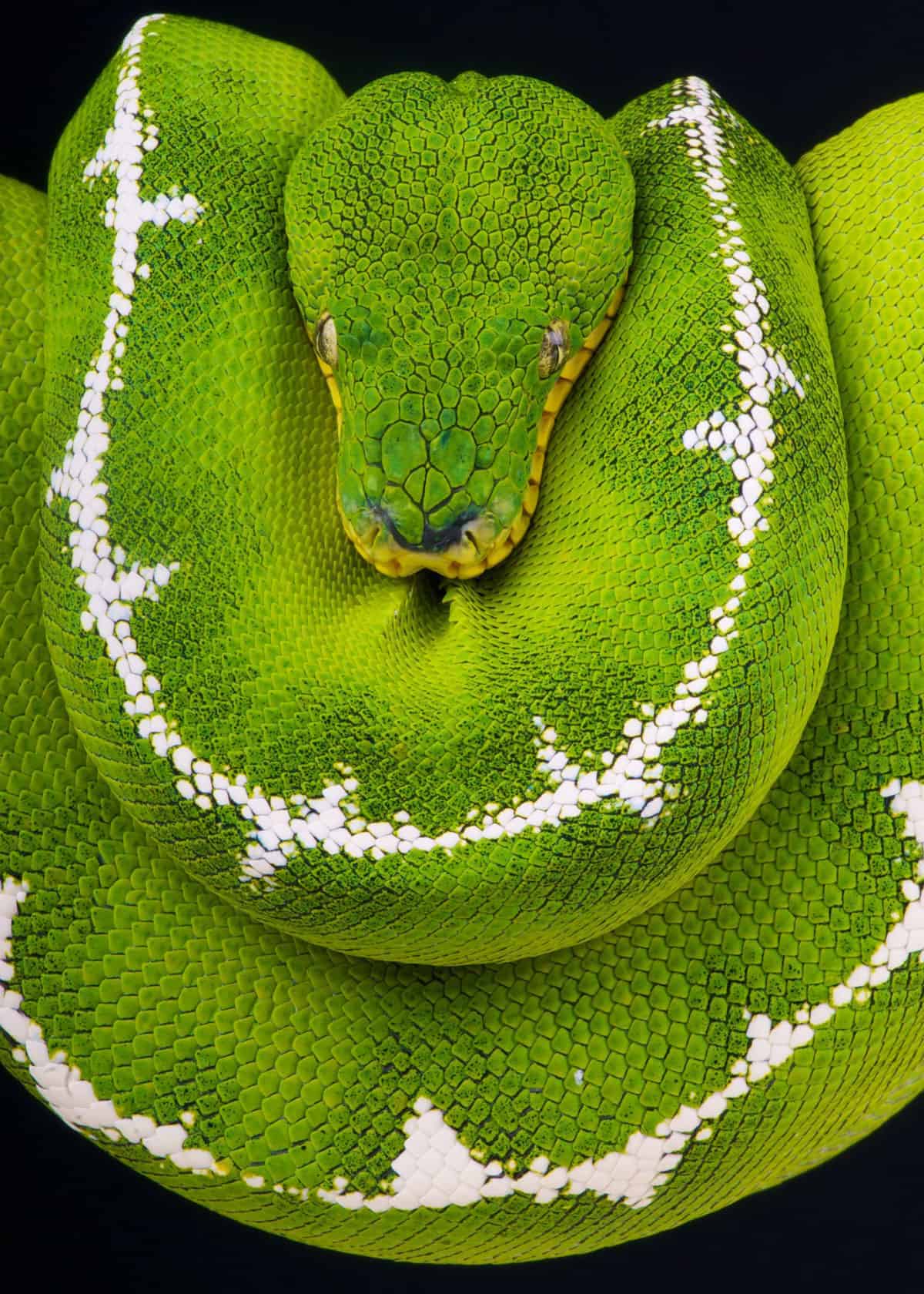
45 Emerald Tree Boa Facts (Guide to Both Species) Diet, Habitat, Babies
The emerald tree boa is colored a bright emerald green across their entire body. This is broken up by rows of white scales which may form a full stripe or be a row of dots running across the back. This colouration blends in with trees and helps to break up their outline to predators.

Pin on Quick Saves
Emerald tree boas are non-venomous, arboreal snakes. They use their prehensile tail to hold onto tree branches. Their head rests atop their coiled body during the day; at night, they hunt for birds but may also eat small reptiles and mammals. Adult emerald tree boas are a bright green color with paler yellow or white bellies, and some have.
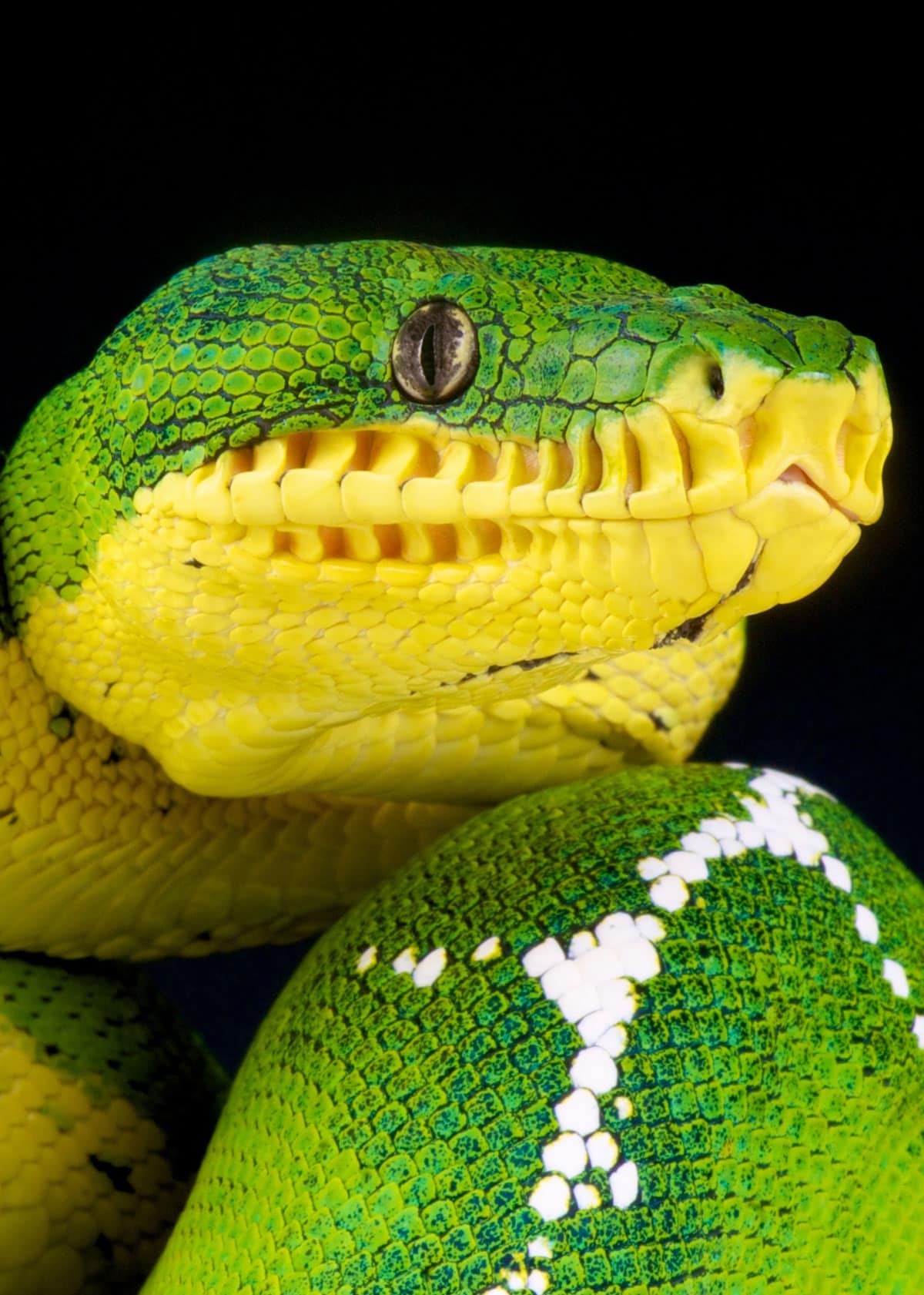
45 Emerald Tree Boa Facts (Guide to Both Species) Diet, Habitat, Babies
As they grow, green flecks appear over the body increasing in size and number until the emerald green of the adult appears. Adults boas can reach up to 6 feet in length. Huge, fang-like teeth assure rapid penetration and a secure grip through the feathers and/or fur of their prey. These snakes are non-venomous. Location: The Lower RainForest.